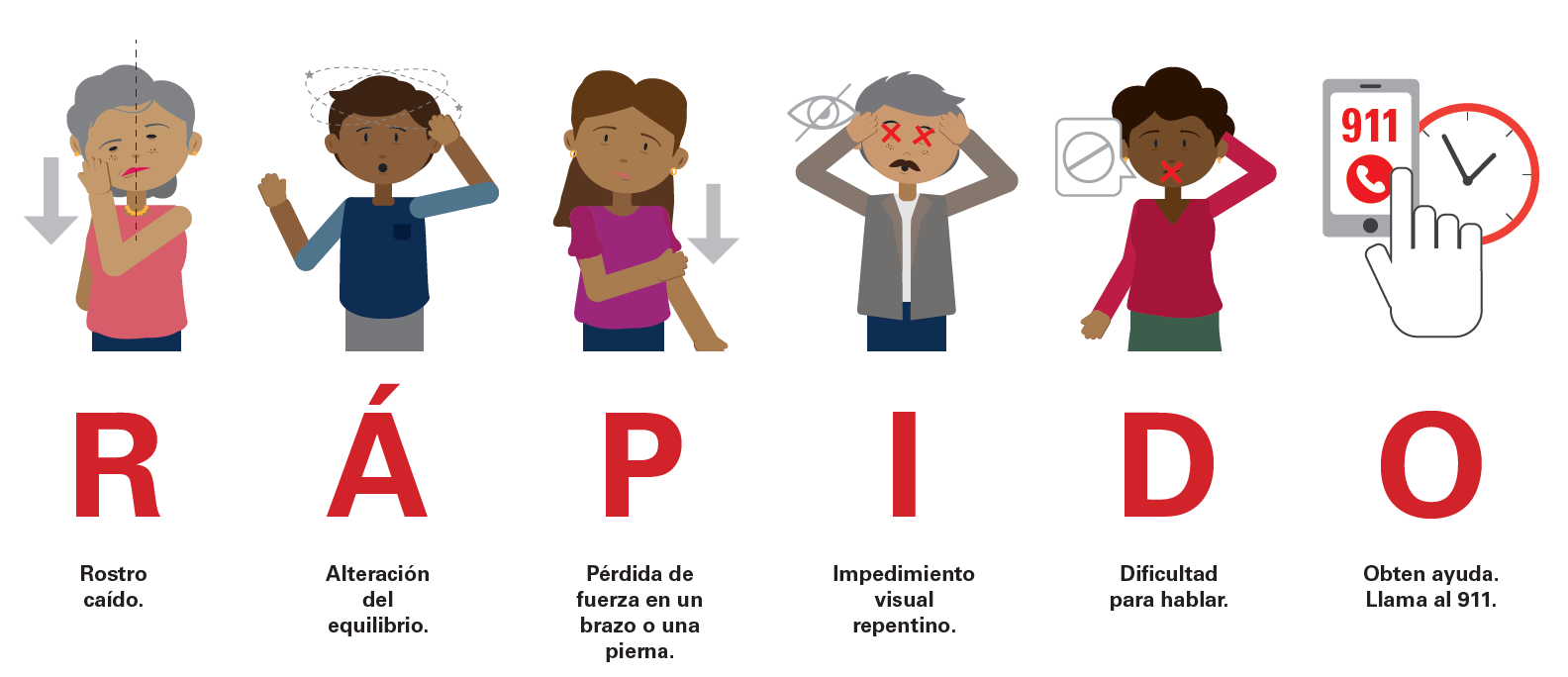RAPIDO: Promoting stroke awareness among Spanish speakers
New Acronym Identifies Signs of Stroke for Hispanic Community

Texas is home to some of the largest Hispanic populations in the country. A Centers for Disease Control and Prevention report showed that just 58% of Hispanic adults knew the telltale stroke symptoms, trailing behind their Black (64%) and white (71%) peers.
In English, we use FAST, or BE-FAST, to identify the warning signs of stroke. Below is a common poster or graphic that can be shown on screens or flyers in physician and hospital waiting rooms. If someone is being treated for any other medical issue the BE-FAST campaign is there to remind them how to identify if someone is suffering from a stroke and to seek treatment immediately.
While translating a stroke education video from English into Spanish, Nurse Clinician Andrea Leal Ancer at Ben Taub Hospital and research assistant at UTHealth Houston, and Dr. Jennifer Beauchamp, associate professor at the Ciznik School of Nursing at UTHealth Houston, realized there were no known Spanish sign and symptom awareness acronyms in the United States. Costa Rican researchers had developed CAMALEON, but Ancer and Beauchamp felt a different need for Spanish-speakers in the United States.


Translating BEFAST in Spanish is doable, but not very effective
In order to achieve successful patient outcomes, sensitivity to culture and language is key. The Hispanic population has some of the highest rates of high blood pressure, diabetes, and obesity. These are all contributing risk factors for stroke. The solution Andrea Leal Ancer and Jennifer Beauchamp developed was the acronym, RAPIDO. Not only does it identify the early warning signs of a stroke, it also sets the intention and urgency of seeking treatment once those symptoms are recognized. The visual aide below works like the BE-FAST graphic above to assist in the recognition and retention of information.
RAPIDO: Promoting stroke awareness among Spanish speakers, (Castro, Alejandra; Leal, Andrea Ancer BSN, RN, LMSW; Montiel, Tahani Casameni; Sharrief, Anjail MD, MPH; Denny, Mary Carter MD, MPH; Beauchamp, Jennifer E.S. PhD, RN, FAAN) was published to explain the need for stroke awareness to be inclusive for Spanish-speakers. RAPIDO still needs to be evaluated and confirmed as an effective tool from the broader medical community. Once accepted, it can be included in stroke awareness/educational campaigns.
Learn more at uth.edu